 |
 |
 |
| |
Changes in Bone Turnover, OPG/RANKL, and Inflammation with ART Initiation:
A Comparison of Tenofovir- and Non-Tenofovir-Containing Regimens
|
| |
| |
Reported by Jules Levin
CROI 2009 Feb 8-12 Montreal
Todd T. Brown1, Grace A McComsey 2
Johns Hopkins University, Baltimore, MD1; Case Western Reserve University, Cleveland, OH2
AUTHOR CONCLUSIONS
Prior to ART initiation, bone resorption activity was high among young, untreated HIV-infected patients.
After 6-12 months of ART initiation, bone turnover increased markedly.
Changes in bone turnover were not associated with systemic concentrations of OPG or RANKL or changes in these markers.
Advanced HIV disease was associated with greater increases in bone resorption with ART initiation.
Tenofovir use, PI use and higher baseline TNFalpha activity were independently associated with increases in osteocalcin with ART initiation.
The acceleration of bone turnover with high levels of bone resorption may account for the decreases in bone mineral density with ART initiation observed in previous studies.
Background:
Bone mineral density decreases with antiretroviral therapy (ART) initiation, although the pathogenesis, including the role of tenofovir (TDF), is unclear.
Bone resorption and formation are normally coupled, and regulated through the interaction of osteoprotegerin (OPG), receptor activator for nuclear factor kappa B (RANK) and RANK ligand (RANKL). OPG and RANKL expression is influenced by inflammatory cytokines, hormones, and other factors (Figure 1).
The role of OPG/RANKL in ART-associated bone loss is not known.
Purpose:
To determine whether changes in bone turnover markers, OPG, and soluble RANKL differ in those initiating ART with TDF-containing regimens compared to those receiving other NRTIs
To determine whether bone turnover is associated with OPG/RANKL or systemic inflammation.
Methods:
Study Population:
HIV-infected Adults, ages 18-50 years
ART-initiated while enrolled in the Case Western University CFAR cohort
50% initiated TDF-containing regimens.
Subjects with concurrent treatment with bisphosphonates excluded
Biomarkers
Assessed at 2 timepoints (prior to and 6-12 months after ART initiation)
Bone Turnover Markers:
-- CTx: breakdown product of collagen (bone resorption marker)
-- Osteocalcin (OC): bone matrix protein secreted by osteoblasts (bone formation marker)
Biomarkers
OPG, sRANKL, calculated ratio of OPG/sRANKL
Inflammatory Markers: soluble receptor TNF_ I & II (sTNFR-I & sTNFR-II), IL-6
Statistical Analysis:
Baseline characteristics compared by Mann-Whitney U or Chi-square Testing
Change in biomarkers from pre-ART concentration by Wilcoxon testing
Biomarkers log-transformed prior to multivariable regression analyses
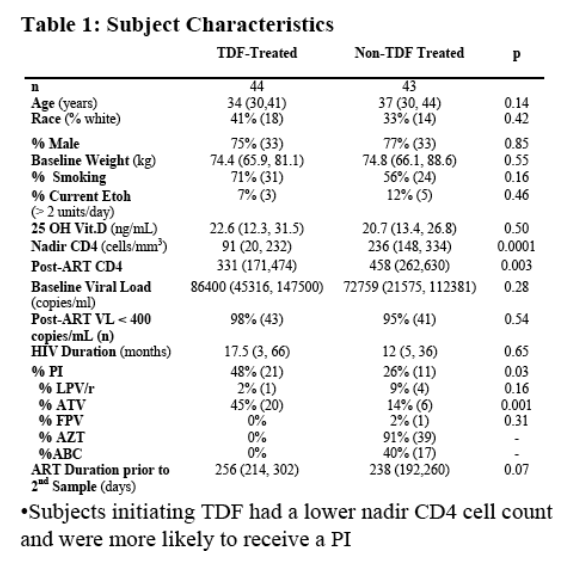
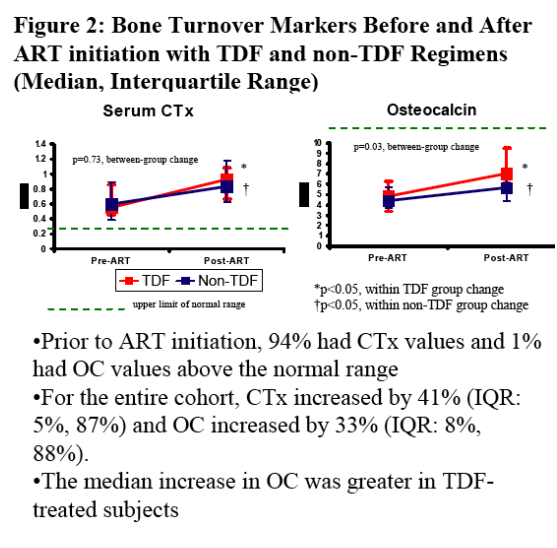
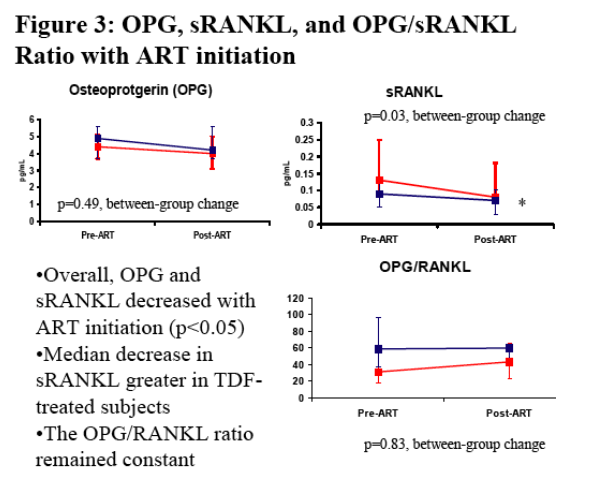
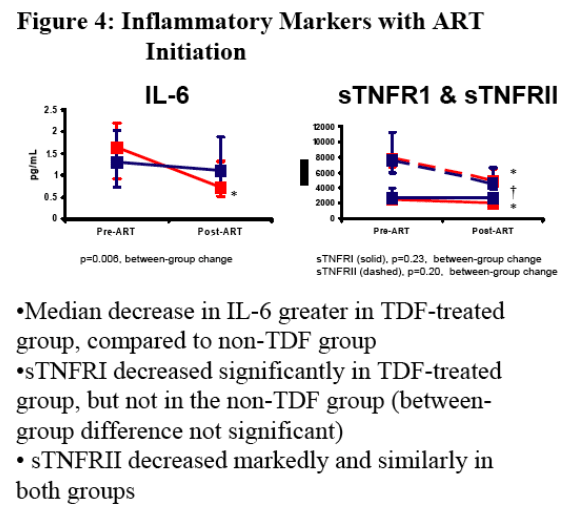
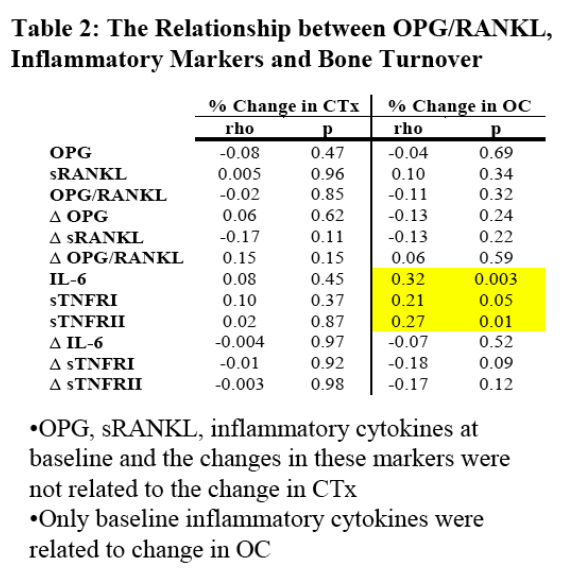
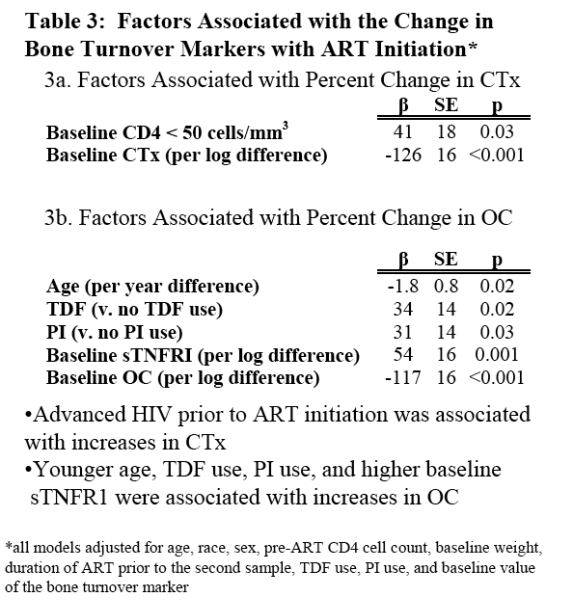
|
| |
|
 |
 |
|
|